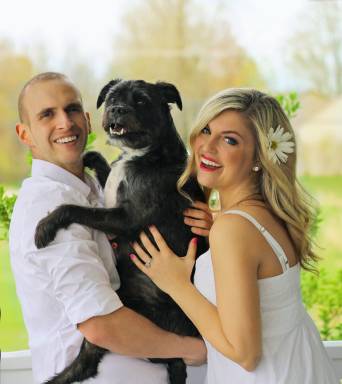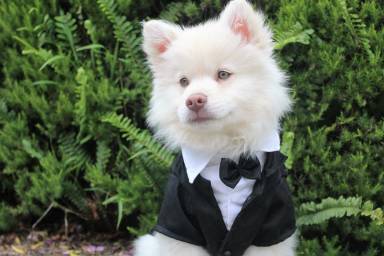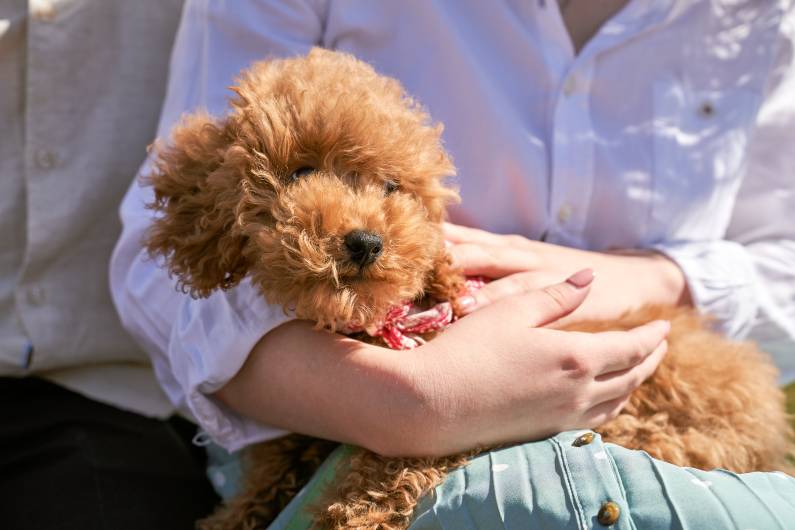A Few Key Tactics to Consider
Dogs often go to obedience school for a month or so to learn from professionals. There’s a lot to be said about training a dog. If you’ve ever seen a police dog or a service animal, then you know canines have the capacity to follow orders and accept somewhat complex commands. Getting them to that point will require multiple kinds of training.
Connect with a verified veterinarian in minutes. Licensed vets are available 24/7 to answer your questions. No need to worry about your furry family member.
We don’t have time to cover this topic exhaustively, but we can go over a few key ways dogs can be trained at home. These may not always be the easiest methods, but if you’re willing to keep at it, eventually, you and your dog will come to an understanding. With that in mind, consider these general strategies.

Image by Terri Cnudde from Pixabay
1. Negative Reinforcement
Negative reinforcement is a slight punishment for unwanted behavior. Shock collars are characterized as negative reinforcement, but they can be quite effective in helping your dog be safe. Choke collars are similarly useful for when you’re taking your pup on a walk, and he thinks he’s the “alpha”. These aren’t the only options, either.
There are now collars that have modern technology built into them. These can be fitted to your dog, and if he crosses a certain boundary, he’ll get a “zap”. You can set the collar to allow or disallow certain areas, meaning you can take the dog to multiple places, and he’ll stay where he’s supposed to. PAWAii SafeWalk Dog Harness can be a good choice if your puppy doesn’t like collars.
Something else a Halo Collar can do is help guide the dog to safety. Basically, as the dog tries to deviate from a given path, he gets a zap until he arrives where he’s supposed to be.

Review symptoms, medications & behavior to keep your pets healthy with a Vet Online in just minutes.
Ask a Vet Live Now2. Positive Reinforcement: Treats and Praise
A lot of owners prefer positive reinforcement, and for good reason. Put yourself in the “paws” of the dog: would you rather get a treat when you do good, or a rolled-up newspaper when you do bad? Most of us would lean toward the treat. With positive reinforcement, you reward your pup with treats and praise.
You’ll know you’ve done a good job when the dog starts performing certain activities for you on his own initiative with the expectation of a treat. You probably don’t want to indulge in that activity, or he might think it’s up to him when he gets a treat. This link can help you most effectively use positive reinforcement training tactics.
3. Trained Conditioning
So like positive reinforcement, trained conditioning will often use treats; but these aren’t the only option. Trained conditioning might incorporate both positive and negative reinforcement, as well as other means of teaching that have to do with neither. Pavlov used conditioning to train dogs so they would drool whenever he rang a bell.
He did this by coupling the bell with a treat. When the dog heard the bell ring, he’d get a treat. So after that, Pavlov would ring the bell whether or not the dog had a treat coming, and the pup would still drool. With conditioning, you can train your dog to act a certain way when a certain something happens.
Having the Best-Trained Pup on the Block
Trained conditioning, positive reinforcement, and negative reinforcement are the primary ways you can train your pup. What works best for you and your animal may depend on a few different factors. There’s more to training than these suggestions, but if you pick a tactic and stick with it, you’ll get results.
Connect with a verified veterinarian in minutes. Licensed vets are available 24/7 to answer your questions. No need to worry about your furry family member.

Tom
Tom has always loved to write since he was little - he wanted to be either a writer or a veterinary doctor, but he ended up being a professional writer while most of his works are based on animals. He was born in San Francisco but later moved to Texas to continue his job as a writer. He graduated from the University of San Francisco where he studied biotechnology. He is happily married and a soon to be father!
Review symptoms, medications & behavior to keep your pets healthy with a Vet Online in just minutes.
Ask a Vet Live Now




